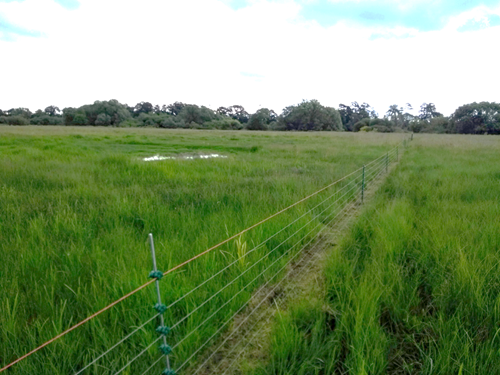During my work experience at GWCT I had the opportunity to go out with the LIFE Waders for Real team and help them out in the field. An EU-funded project, LIFE Waders for Real seeks to reverse the decline of breeding waders in the Avon Valley. Over the past 5 years, the project team and its network of committed farmers and landowners has managed to stabilise the declining lapwing population and reverse the decline in redshank (https://www.gwct.org.uk/news/news/2019/april/waders-making-a-comeback-in-the-avon-valley/).
We spent the morning taking down electric fences which are erected around key lapwing nesting and chick foraging sites, the chicks have now fledged from these sites and so we were getting the fields ready for grazing. The fence was there to exclude key terrestrial predators such as foxes and badgers to improve lapwing nest and chick survival.

In the afternoon, we visited one of the project wader hotspot sites in the south of the valley. It was fantastic to hear Ryan Burrell, one of the project ecologists describe to me all the habitat improvements, changes to grazing practice and improvements in predator management that have been adopted by the landowner and keepers on this site to help their breeding wader population and the benefits this is having for the whole wetland system.
As we walked over the site recording the birds, flora and wildlife, we observed in the distance Ryan noted the distinctive call of an adult lapwing who has chicks. On hearing this we retreated and hid in a nearby hedgerow taking care not to disturb the adult and her chicks. Then, after a minute or so of watching with binoculars, we spotted two, approximately 20-day old chicks emerging from behind a clump of thistles. Once in a suitable location, Ryan approached and quickly caught one of the chicks, the second used its camouflage and the presence of good habitat to allude us but Ryan quickly said “well if we struggle to find them then hopefully the predators struggle too”.
As for the chick which was caught, we quickly and carefully recorded the beak length, weight and leg length which allows the team to look at the condition and growth of the chicks they monitor. It had a metal ring fitted around its leg which is inscribed with a unique code alongside adding colour rings. The rings were fitted by Ryan an experienced bird ringer and licence holder. These marks are unique to this bird and allow each chick to be identified from a distance wherever it goes in the future. These rings allow the team to look at the recruitment of juveniles back into the Avon Valley breeding population, alongside where their lapwing go when they are not breeding in the Avon using sightings from the general public.
After a minute to get through the ringing process, we put the chick back under the cover of the thistles, out of sight of predators, and retreated to watch its mother quickly return. After all this excitement we moved away from those fields, allowing the chicks and their parents to settle and conducted a vegetation survey. We chose random points in the field where we measured and recorded the height of the vegetation and the moisture levels of the soil. The project uses this information to improve management and look at the habitats selected by foraging lapwing chicks.
It was fascinating to see how the LIFE Waders for Real project is run and how they do their research, on top of all the experience I have gained from working in the office.
Rosie Potter
Work placement student

Want to learn more about Waders For Real?
Visit the Waders For Real website and get all the latest project updates on Twitter and Facebook